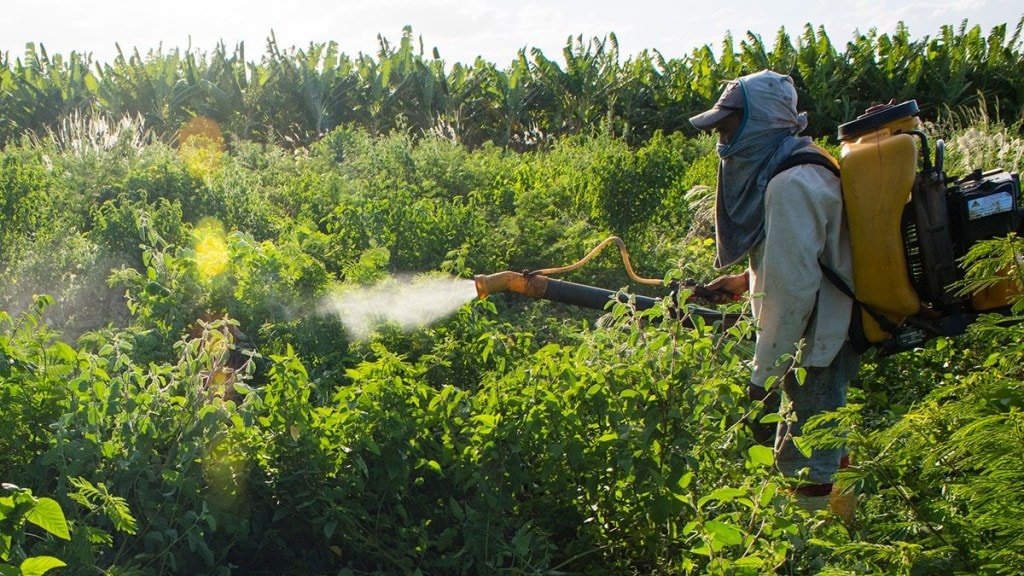– By Dr Arvind Kapur
Growing population, shrinking input resources and changing climate pose biggest challenge to agriculture today. Urbanisation and industrialization are taking away fertile agriculture lands, causing a decline in water table and an increase in nutrient deficient soils, which are the key factors leading to shrinking input resources in agriculture. All these factors are impacting growing demand of food both in terms of quantity and nutritional quality. Transformational efforts and revolutionary improvements are required for sustainable food production.
Presently our soils are almost dead having little or no organic matter resulting in poor availability of macro and micronutrient from soils. Excessive and unbalanced application of inorganic fertilizers, coupled with poor uptake efficiency and higher doses of micronutrient applications, significantly increase the costs of crop cultivation. Moreover, these practices detrimentally impact soil health and contribute to polluting our water aquafers.
More output with less input
Now we have to focus on “More with less” at farm level, which means we have to conserve our input resources like soil, water and fertilizer applications to not only minimize the impact on soil health and water quality, but also on the environment through less GHG and other gaseous emissions.
Crop breeding along with new breeding technologies are bringing high potential productive cultivars. But their genetic potential is not fully realized due to the imbalanced use of Nitrogen, Phosphorus and Potassium fertilizers and non-availability of nutrient from the soils due to their fixation in the soil. To fix these issues, we need alternative and green approaches to regenerate the agriculture for sustainable productivity and food production.
Innovative Urea with enhanced efficiency
At present, the efficiency of uptake of nitrogen from Urea by plants is around 35 percent and rest of the nitrogen is either leached into aquafers or evaporated into the atmosphere as nitrite oxide and methane. The subsidies on urea and DAP are more than INR 1.71 lac Cr and the expenditure on handling subsidies is more than INR 2.55 Cr. Due to imbalanced use of nitrogen fertilizers, the Government of India (GOI) came out with Nutrient Based Subsidies (NBS) regulations in 2010.
The new approach promoted by GOI is “Nano based Urea and DAP”. These Nano products not only reduced the application quantities but also significantly improved the uptake efficiency to more than 90 percent. Additionally, this will not only reduce the subsidy component but also improve the soil and climate health.
TERI has also launched Nano Urea and DAP with different Biogenic approach. In this approach, the Nano particles are synthesized through biological process and each Nano particle is encapsulated in corona made of bio-chemicals like lipo-proteins and saccharides. These will provide additional advantage of bio-stimulants to the plants. Along with this TERI also launched Nano Phosphorus which will improve the uptake efficiency from 25-30 percent in conventional to more than 90 percent in Nano P.
All these disruptive technologies bring higher uptake efficiencies, less use and better output of economic yield in crop plants.
Microbiome, the green revolution in agriculture
The other technology which can transform agriculture and provide greener alternative is soil microbiome. Micro-organisms always played significant role in rhizosphere in the soils for fixing nitrogen and solubilizing the trapped nutrient and made them available to plants.
TERI has developed Mycorrhizal based fertilizers which make symbiotic association with roots of plants and provide nutrition to the plant and in turn take little carbon sources from plants. To make our soils live again and improve their carbon content, we need to regenerate the whole rhizosphere microbiome. We are currently using an advanced consortium of Mycorrhiza along with its beneficial microbiome bacteria to provide superior field performance. In the future, we look towards incorporating other soil microbes such as microalgae to establish a more robust microbiome in the soil. This microbiome continuously accumulates macro and micronutrients which either they are getting from atmosphere or from existing sources in the soils. These micro-organisms either make symbiotic association with roots or act independently in the soil and supply nutrients to plants.
Presently, there is big focus on creating soil microbiome for sustainable productivity and food production globally. It is more relevant to India today. At present, fertilizer direct subsidy cost is INR 1.71 lac Cr and the cost of managing subsidy is another 2.54 lac Cr. The only way to reduce this cost is to provide alternative option for fertilizers, reduce the input quantities and improve the uptake efficiency. The role of biofertilizers and bio-stimulants will play bigger role as greener solutions for future. The other challenge is the per unit productivity of crop plants. Our actual genetic potential of crops is much higher than the realizable potential in the fields. To reduce this gap, we need sustainable and greener alternatives for higher productivity because our land resource is shrinking.
The other advantages of these solutions including microbiomes is the higher retention of moistures in the soils. This will help in drought conditions by maintaining the rhizosphere moisture conditions and save plants from wilting under moisture stress.
By 2030, we need 60-70 Mn tonnes more food to sustain our population growth. Presently, we are producing 331 Mn tonnes of food, and we need close to 400 Mn tonnes not only to ensure our food security system but also provide subsidize food to our struggling population.
While the challenges faced by the Indian agriculture sector today are many, there lies an opportunity for transformation and sustainability. By embracing innovative solutions like nano-based fertilizers and soil microbiome technologies, we can pave a promising pathway to address the challenges of shrinking resources and increasing food demand in Indian agriculture. These solutions promise higher efficiency, reduced environmental impact, and enhanced productivity, ensuring a sustainable and greener future for food production.
(Dr Arvind Kapur is the distinguished fellow, sustainable agriculture division at The Energy and Resources Institute, TERI.)
(Disclaimer: Views expressed are personal and do not reflect the official position or policy of Financial Express Online. Reproducing this content without permission is prohibited.)
